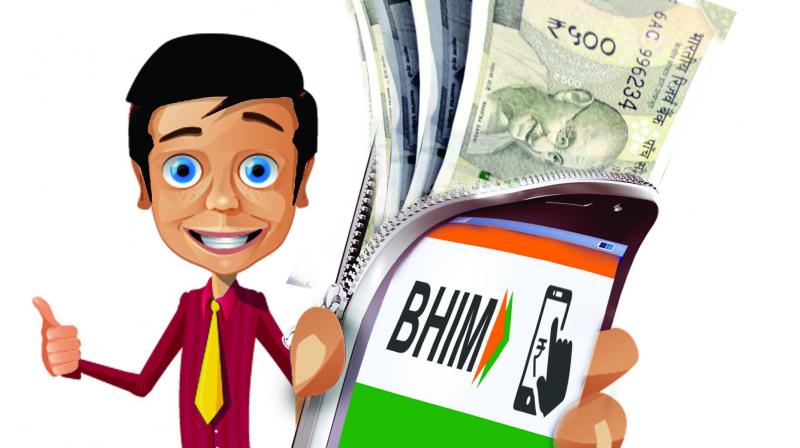BHIM gives E-Wallets a run for money
After demonetisation, several mobile payment solutions like bhim and e-wallets have gained prominence.

BHIM — or the Bharat Interface For Money — is quickly becoming the favoured mobile payment solution for crores of Indians. Since its launch on December 31 till the end of February, the app had been downloaded 17 million times. Following its Android launch, BHIM is now also available on iOS.
BHIM is an extension of the Unified Payment System. It allows users to send and receive money through a mobile app that is linked to their bank savings account. This is an elegant solution compared to e-wallets that need to maintain a cash balance in order to be functional. Naturally, the question then arises: Should users switch to BHIM and simply spend from their banks, and stop using e-wallets? There are many differences between BHIM and e-wallets, and we'll examine them here in order to help you understand the pros and cons of both ideas.
BHIM vs Wallets: Where BHIM Wins
Balance, loading & unloading: The first major difference between BHIM and UPI apps and e-wallets is how you maintain your spending balance. BHIM and UPI apps allow you to send and receive money with your bank account. You do not have to maintain a balance with the app. The app is your bank account, in a sense. But in e-wallets, you must maintain a balance in order to spend from it.
Not just that, returning your wallet balance back to your bank account will come with limitations and charges. But with BHIM and UPI, there is no need to send the money back from the app to the bank, since the money has been sitting in your account all along.
Interoperability: Another aspect where BHIM and UPI apps trump e-wallets. E-wallets do not have interoperability, meaning that if you are using Wallet X, you can only transfer money to another user on Wallet X, and not to a user operating Wallet Y. This isn’t a problem with BHIM, since you may move money between accounts with any bank on the BHIM platform. For example, you may be using an SBI account but you can send and receive money from users on ICICI or HDFC.
Spending limits: BHIM and UPI score heavily here as well. E-wallets have a monthly spending limit of Rs 10,000 which can be raised to Rs 100,000 after the KYC process wherein users need to submit proof of ID and address in order to become authenticated. But BHIM allows a limit of Rs 10,000 per transaction and Rs 20,000 as the total worth of transactions in a 24-hour cycle. UPI apps go further, allowing you to spend up to Rs 100,000 per transactiWhere BHIM Lags
There are broadly two areas where e-wallets have an edge over UPI and BHIM.
Marketing gimmicks: E-wallets have been around for a few years and they have had the time to build relationships with merchants and businesses. As a result, e-wallets are useful not just for money transfers but also for earning cashbacks and discounts. Not just that, some e-wallets also operate as e-commerce platforms allowing users to buy merchandise, electronics, tickets, etc. UPI and BHIM, on the other hand, are recent innovations and have some catching up to do in this regard.
Credit usage: E-wallets allow you to link and spend from your credit card, allowing you to leverage the power of the credit available to you. BHIM works on simpler principles: you get to spend only if you have a bank balance, and you cannot link BHIM and UPI apps to your credit card account yet.on.
How BHIM Is Catching Up:
In the latest Union Budget, Finance Minister Arun Jaitley announced a referral bonus and cashback scheme for BHIM users. “The government will launch two new schemes — a referral bonus for consumers and a cash-back scheme for merchants — to promote the use of BHIM,” Jaitley said during his budget speech. With these inclusions, BHIM will become a little more attractive to users.
Conclusion:
Both e-wallets and UPI-based apps such as BHIM have a long way to go and a big role to play in India where internet penetration and smartphone usage are increasing by leaps and bounds every year. Both need to evolve in order to accommodate the changing needs of the Indian consumer in an increasingly less cash-dependent economy. However, at this point, you may want to have both BHIM and e-wallets installed on your smartphones. They both have some unique services to offer you.
(The writer is CEO of BankBazaar.com)

